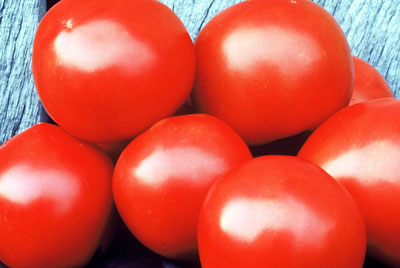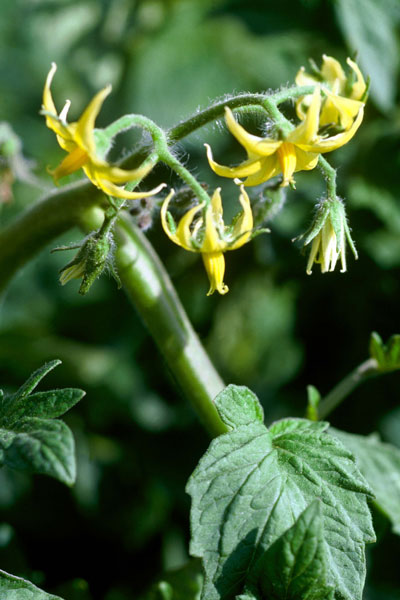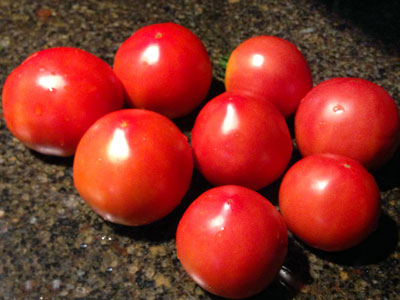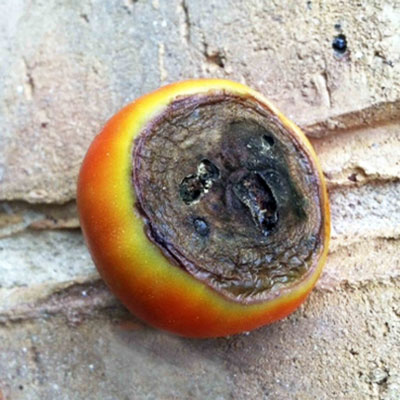Tomato Tips for the Time
By late May and June, tomatoes can crop up with serious problems. But you have time to avoid them, so let’s outline the details.

There’s nothing better than a harvest of fresh tomatoes!
• Failure to set fruit. Tomatoes are self-pollinating. The pollen shatters within the flowers through mechanical agitation, usually from wind. If your flowers fall to the ground almost as if they’d been cut off with shears, that’s not birds or squirrels. It’s because they aren’t getting pollinated. Try thumping the flower clusters every couple of days to see if that helps (usually does).

Try thumping flower clusters if your tomatoes fail to set fruit.
If you still don’t get any fruit, think back to the varieties you planted. Large-fruiting tomatoes do not set fruit when daytime temperatures exceed 90 degrees. They’ve been bred for commercial tomato regions with somewhat cooler summers than we have in Texas. Varieties like Big Boy, Beefsteak and the giant heirlooms may only set four or five fruit for us here. (Remember that we talked about that here back at planting time.)

The variety Tycoon bears tennis ball-sized fruit well into the summer.
If you’re not getting any flowers at all, therefore no fruit, your plants are probably in too much shade or you’re not giving them enough water and nitrogen for active growth.
• Bottom leaves are turning yellow in thumbprint-sized blotches. That’s the description of early blight. Use a legally labeled fungicide to control it. Your certified nursery professional can show you the various product options.
• Fruits develop sunken, dried and brown areas on their bottom ends. That’s called “blossom-end rot,” and it’s usually due to letting plants get too dry between waterings. The blossom ends are the points farthest from the roots, so they’re the first to dry out and the last to get water. It’s especially common in containerized tomatoes, particularly if they’re in 5-gallon or smaller containers. Some will also contend that it’s due to a calcium deficiency, but most Texas soils have adequate calcium, so that’s usually not the issue. Try to be much more diligent in keeping your plants watered.

Blossom-end rot usually indicates that your plants got too dry at least once.
• Birds pecking at ripening fruit. For this, you can either cover your plants with bird netting, or you can harvest the fruit just as it begins to turn red. It will ripen indoors on a towel or newspaper with no loss of flavor or nutritional value.
• Fruit cracks vertically. This is usually due to sunscald. Harvesting early, as described above, usually helps with this.
